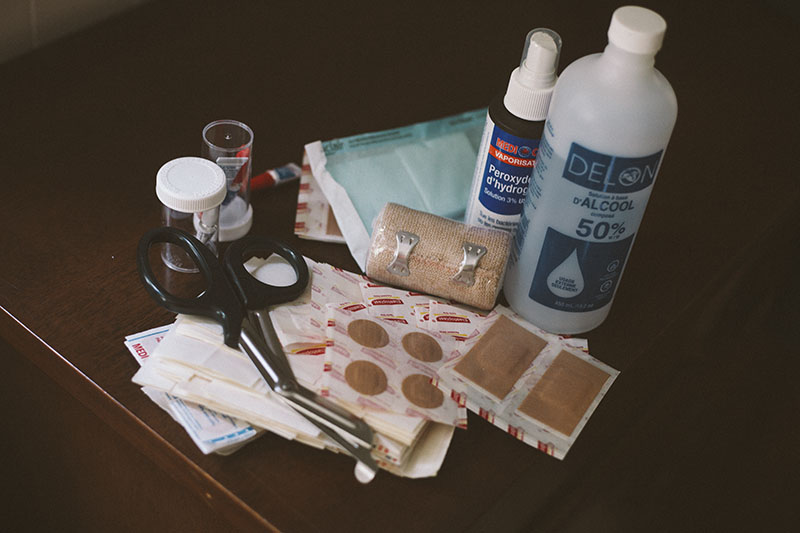There are a lot of dos and do-nots when it comes to the treatment of scratches, cuts, and gashes. A more serious open wound or lesion should always be treated by a doctor, especially if an obvious infection has started, but for an on the spot fix there are a few interesting options.
1. Stitches
•Any cut larger than 3/4 of an inch should be met with a visit to your local clinic for stitches as longer cuts frequently re-open through everyday activities. The longer the wound is open the higher the chance of infection.
•If you are capable of stitching yourself up, make sure the area is properly disinfected first, and make sure you use medical grade thread as well as sterile tools. Your environment needs to be sterile as well, otherwise you might have a serious case of infection on your hands.
•If you are immunocompromised in any way, go straight to a professional: do NOT do this at home.
•The scalp and the forehead have a lot of blood vessels. As a general rule, cuts on these parts of your body will require stitches to stop blood flow. Likely, you won’t be able to do these stitches for yourself, so it’s a good idea to engage the help of a trusted friend or go straight to a professional. Again, if you do these yourself or let someone else stitch you back up, make sure the environment and equipment used is medical grade and sterile.
•Needles + excess adrenaline tend to provide a perfect storm for accidents to turn into even bigger accidents. If you’re not sure about doing stitches yourself or getting a friend to do them for you, go to a professional.2. Bandages
•Use bandages when facing abrasions instead of lacerations, for example in the case of a scraped knee.
•Even if you’re only bandaging, always clean the area well by irrigating with clean water, and using some sort of anti-bacterial agent like iodine or alcohol.
•If you suffered an avulsion, meaning that a large chunk of your skin has been ripped off, be very thorough when cleaning the area. Rush to your local clinic at the first sign of an infection, as infections can be serious.3. Super Glue
•Use super glue instead of bandages with shallow lacerations sub 3/4 of an inch in length, but only if the flow of blood is minor. Nicks and light cuts from sharp knives benefit from super glue over the use of band-aids, and usually heal completely overnight.
•Preferably, buy medical grade super glue like Vetbond. In my personal experience, Krazy Glue works fine also; I’ve had to use it quite a bit with the sheer number of cuts I get from testing out the volume of knives I own.
The above guide is in no way the last word on wound care but it is a good overview with regard to a typical injury situation.
You’ve just read the dos but don't forget there are always do nots as well. To read up on these please go to More Than Just Surviving. The information on this website is instructive and makes complete sense.
Once again, we must emphasize if a wound becomes infected or is serious enough not to warrant the above tips for any length o time please see a doctor. Even if you have to wait a day it will be worth it in the long run.

@[184104330:2048:Stephanie Holmes Watkins] @[100000124222667:2048:Charles Neil Prestwood] @[1823320764:2048:Jace Hargrove]